Of all the opportunities emerging from the AI movement, the rise of robotaxis is one of the most exciting. Autonomous vehicles are becoming more sophisticated, safer, and less expensive to operate with every passing day. Within a few years, we expect the global addressable ride-hail market to be valued at $10trn.
Naturally, the upside for whoever ends up on top (and its investors) is huge. Alphabet’s Waymo may have the edge for now but we believe Tesla will ultimately drive the robotaxi revolution towards its full potential.
Safety and price – the two key battlegrounds
Simply put, the winner of the robotaxis ‘war’ will be the provider making the most trips. This requires getting customers to opt for an autonomous taxi ride over the human-controlled alternatives they’re used to. And for this to happen at scale, we see two important battlegrounds on which Tesla and Waymo will need to fight it out.
The first is safety. People are more likely to take a robotaxi ride if they know it’s as safe, or indeed safer than driving themselves or hailing a human-driven cab.
Right now, Waymo is leading here. Its commercial robotaxi service – presently operating in San Francisco, Phoenix, and LA – is clocking around 400,000 miles between police-reported collisions.
Tesla – which is slated to launch its robotaxi service before year-end – is reporting around 10,000 miles between incidents. So rapid is the pace of development of its Autopilot technology, however, the company expects this figure to exceed 700,000 by October.
At this point, its frequency of incidents will not only be lower than Waymo’s, but also the national accident rate for all vehicles in the US, human-controlled or otherwise.
The second key barrier to widespread robotaxi adoption is price. People will always tend towards the lowest cost of transport available to them.
As ride hail’s cost-per-mile decreases through each price point, another massive addressable market opens. By the time it’s reached $0.25 per mile, the total addressable market globally is valued around $10trn.
Who will win the race to the bottom? Our money’s on Tesla.
For a start, Waymo’s robotaxi service will be more expensive to run than Tesla’s. The company depends on high-cost auto manufacturers such as Hyundai to build the cars deploying its technology. Its self-driving platform is underpinned by expensive LiDAR technology.
Tesla, on the other hand, is vertically integrated – it makes its cars itself. Rather than LiDAR, its self-driving platform is now powered by cameras and machine learning.
The net result is a lower cost to get each of Tesla’s robotaxis onto the streets. As the below shows, the company will get many more Cybercabs for $5bn in capex than Waymo will get Hyundai Ioniqs.
Likewise, the depreciation costs of its vehicles will be much lower once they are in service. In fact, we expect the operating cost per mile of the Cybercab to be around 30-40% lower than the Waymo 6th Gen once at scale.
Why is this important? At scale, Tesla’s lower manufacturing and maintenance costs will enable more competitive pricing per mile for customers.
As its technology continues to advance, and this price continues to move down, we expect the company to win the most rides in the biggest addressable market.
Hail the king of ride-hail
For most of us, robotaxis seem like an idea from a sci-fi film right now. Make no mistake, though, they’re coming.
These autonomous vehicles are already hitting streets worldwide. As they become safer, cheaper, and more ubiquitous, they have the power to revolutionise the way we travel in a very short period of time.
Many companies will enter the evolving market. For our part, we expect Tesla’s sheer scale to afford the necessary cost and safety edges required to lead the sector towards maturity.
The revenues and profits generated stand to be a game-changer for an already enormous company.
Brett Winton is chief futurist at ARK Invest. The views expressed above should not be taken as investment advice.





